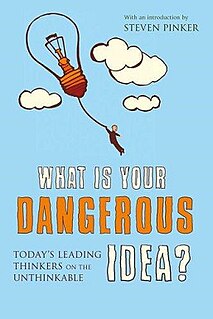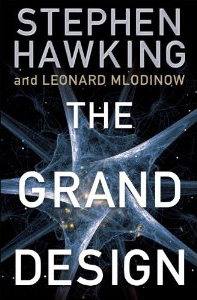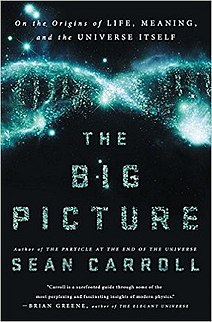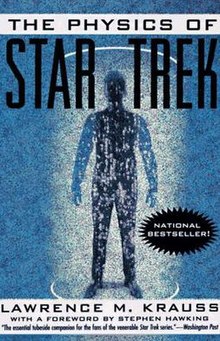
The multiverse is a hypothetical group of multiple universes. Together, these universes comprise everything that exists: the entirety of space, time, matter, energy, information, and the physical laws and constants that describe them. The different universes within the multiverse are called "parallel universes", "other universes", "alternate universes", or "many worlds".
The technology in Star Trek has borrowed many ideas from the scientific world. Episodes often contain technologies named after real-world scientific phenomena, such as tachyon beams, baryon sweeps, quantum slipstream drives, and photon torpedoes. Some of the technologies created for the Star Trek universe were done so out of financial necessity. For instance, the transporter was created because the limited budget of Star Trek: The Original Series (TOS) in the 1960s did not allow expensive shots of spaceships landing on planets.
"Parallels" is the 11th episode of the seventh season of the American science fiction television series Star Trek: The Next Generation, the 163rd overall. It was originally released on November 29, 1993, in broadcast syndication. The episode was written by Brannon Braga, and directed by Robert Wiemer. Executive producer Jeri Taylor wrote its final scene, but was uncredited.

Lawrence Maxwell Krauss is an American-Canadian theoretical physicist and cosmologist who previously taught at Arizona State University, Yale University, and Case Western Reserve University. He founded ASU's Origins Project, now called ASU Interplanetary Initiative, to investigate fundamental questions about the universe and served as the project's director.

The Fabric of the Cosmos: Space, Time, and the Texture of Reality (2004) is the second book on theoretical physics, cosmology, and string theory written by Brian Greene, professor and co-director of Columbia's Institute for Strings, Cosmology, and Astroparticle Physics (ISCAP).
Physics World is the membership magazine of the Institute of Physics, one of the largest physical societies in the world. It is an international monthly magazine covering all areas of physics, pure and applied, and is aimed at physicists in research, industry, physics outreach, and education worldwide.

"Threshold" is the 31st episode of American science fiction television series Star Trek: Voyager airing on the UPN network, the 15th episode in the second season. This episode won a 1996 Emmy for Outstanding Individual Achievement in Makeup in a Television Series.
How William Shatner Changed the World is a 2005 two-hour television documentary, commissioned by Discovery Channel Canada and co-produced for History Channel in the United States and Channel Five in the United Kingdom. Hosted and narrated by William Shatner, known for his portrayal of Captain James T. Kirk, and based on his 2002 book, I'm Working on That, the show focuses on technological advancements and people in the real world that were inspired by the Star Trek phenomenon.

What Is Your Dangerous Idea?: Today's Leading Thinkers on the Unthinkable is a book edited by John Brockman, which deals with "dangerous" ideas, or ideas that some people would react to in ways that suggest a disruption of morality and ethics. Scientists, philosophers, artists, and various other groups of people have written in to the online salon called the Edge, where thinkers in several areas post and discuss their ideas. This collection of responses forms the entirety of the book. The basic concept behind the book is "to gather a hundred of the most brilliant minds in the world in a room, lock them in, and have them ask each other the questions they were asking themselves".

Physics of the Impossible: A Scientific Exploration Into the World of Phasers, Force Fields, Teleportation, and Time Travel is a book by theoretical physicist Michio Kaku. Kaku uses discussion of speculative technologies to introduce topics of fundamental physics to the reader. The topic of invisibility becomes a discussion on why the speed of light is slower in water than in vacuum, that electromagnetism is similar to ripples in a pond, and Kaku discusses newly developed composite materials. The topic of Star Trek "phasers" becomes a lesson on how lasers work and how laser-based research is conducted. The cover of his book depicts a TARDIS, a device used in the British science fiction television show Doctor Who to travel in space and time, in its disguise as a police box, continuously passing through a time loop. With each discussion of science fiction technology topics he also "explains the hurdles to realizing these science fiction concepts as reality".
The zero-energy universe hypothesis proposes that the total amount of energy in the universe is exactly zero: its amount of positive energy in the form of matter is exactly canceled out by its negative energy in the form of gravity. Some physicists, such as Lawrence Krauss, Stephen Hawking or Alexander Vilenkin, call or called this state "a universe from nothingness", although the zero-energy universe model requires both a matter field with positive energy and a gravitational field with negative energy to exist. The hypothesis is broadly discussed in popular sources.

The Grand Design is a popular-science book written by physicists Stephen Hawking and Leonard Mlodinow and published by Bantam Books in 2010. The book examines the history of scientific knowledge about the universe and explains eleven-dimensional M-theory. The authors of the book point out that a Unified Field Theory may not exist.

A Universe from Nothing: Why There Is Something Rather than Nothing is a non-fiction book by the physicist Lawrence M. Krauss, initially published on January 10, 2012 by Free Press. It discusses modern cosmogony and its implications for the debate about the existence of God. The main theme of the book is how "we have discovered that all signs suggest a universe that could and plausibly did arise from a deeper nothing—involving the absence of space itself and—which may one day return to nothing via processes that may not only be comprehensible but also processes that do not require any external control or direction."
The Void is the philosophical concept of nothingness manifested. The notion of the Void is relevant to several realms of metaphysics. The Void is also prevalent in numerous facets of psychology, notably logotherapy.

Hiding in the Mirror is a popular science book by the theoretical physicist Lawrence M. Krauss. The text was initially published on October 20, 2005 by Viking Press. This is his seventh non-fiction book.

Atom: An Odyssey from the Big Bang to Life on Earth...and Beyond is the sixth non-fiction book by the American theoretical physicist Lawrence M. Krauss. The text was published on April 1, 2001 by Little, Brown. Krauss won the Science Writing Award (2002) for this book.

Quintessence: The Search for Missing Mass in the Universe is the fifth non-fiction book by the American theoretical physicist Lawrence M. Krauss. The book was published by Basic Books on December 21, 2000. This text is an update of his 1989 book The Fifth Essence. It was retitled Quintessence after the now widely accepted term for dark energy.

Beyond Star Trek: Physics from Alien Invasions to the End of Time is the fourth non-fiction book by the American theoretical physicist Lawrence M. Krauss. The book was initially published on November 7, 1997 by Basic Books and since then has appeared in five foreign editions. In his previous work, The Physics of Star Trek, Lawrence Krauss explained a number of ideas and concepts featured in the series; they may or may not exist in our universe. In this book, Krauss goes farther to discuss the realities of physics when it is applied to components from other sci-fi story lines.

Brief Answers to the Big Questions is a popular-science book written by physicist Stephen Hawking, and published by Hodder & Stoughton (Hardcover) and Bantam Books (Paperback) on 16 October 2018. The book examines some of the universe's greatest mysteries, and promotes the view that science is very important in helping to solve problems on planet Earth. The publisher describes the book as "a selection of [Hawking's] most profound, accessible, and timely reflections from his personal archive", and included, according to a book reviewer, drawing upon "half a million or so words" from his essays, lectures and keynote speeches. The book was incomplete at the time of the author's passing in March 2018, but was completed with "his academic colleagues, his family and the Stephen Hawking Estate". A foreword to the book was written by Eddie Redmayne, Oscar-winning actor who portrayed Stephen Hawking in the 2014 film, The Theory of Everything; an introduction by Kip Thorne, Nobel-prize winning physicist; and an afterword by Lucy Hawking, the author's daughter. A portion of the royalties from the book are to go to the Motor Neurone Disease Association and the Stephen Hawking Foundation.

The Big Picture: On the Origins of Life, Meaning, and the Universe Itself is a non-fiction book by American theoretical physicist Sean M. Carroll. The book was published on May 10, 2016, by Dutton. In his fourth book, Carroll defends the argument that the Universe can be completely interpreted by science, introducing "poetic naturalism" as a philosophy that explains the world.














